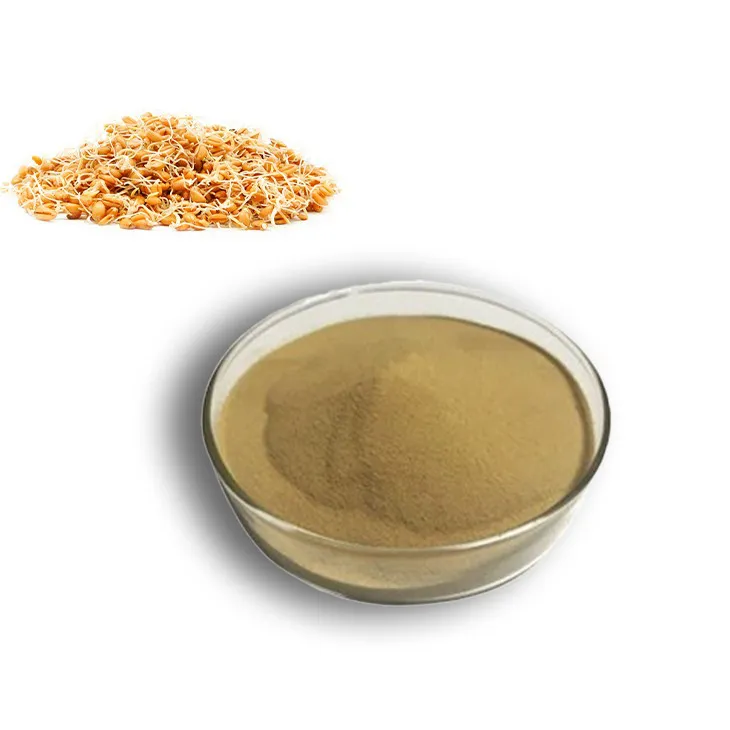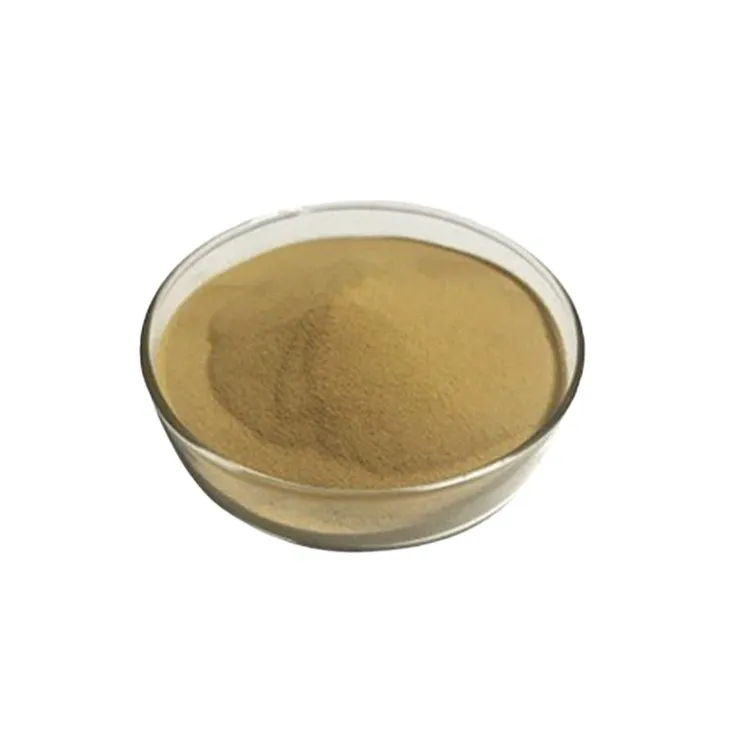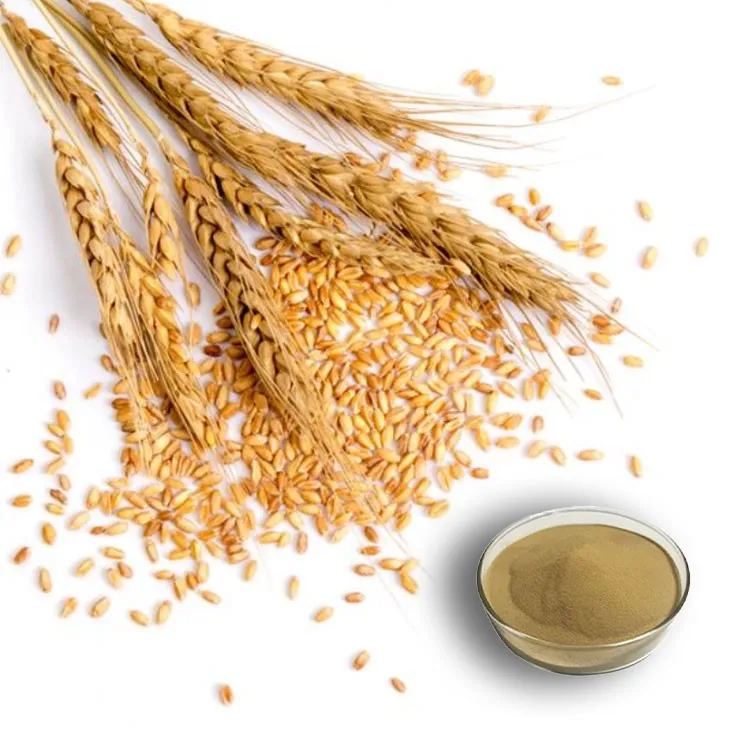- 0086-571-85302990
- sales@greenskybio.com
Extraction process of wheat germ extract.
2024-11-30

1. Introduction
Wheat Germ Extract is a highly valuable substance in the modern world. It is rich in a variety of nutrients, such as vitamins, minerals, essential fatty acids, and antioxidants. These components contribute to its numerous health benefits, which range from improving cardiovascular health to enhancing the immune system. Due to its excellent properties, it has found wide applications in the food, pharmaceutical, and cosmetic industries. As a result, the extraction process of Wheat Germ Extract has become an important area of research and development.

2. Selection of Wheat Germ
2.1 Quality Criteria
The first step in the extraction process of Wheat Germ Extract is the careful selection of high - quality wheat germ. Several factors need to be considered when choosing wheat germ for extraction. Firstly, the purity of the wheat germ is crucial. It should be free from contaminants such as dirt, stones, and other foreign particles. Secondly, the freshness of the wheat germ plays an important role. Fresh wheat germ is more likely to contain a higher amount of active compounds. To ensure freshness, the wheat germ should be sourced from recently harvested wheat.2.2 Origin and Varieties
The origin of the wheat and its variety also affect the quality of the wheat germ. Different regions may have different soil and climatic conditions, which can influence the nutrient composition of the wheat germ. For example, wheat grown in regions with rich soil and optimal sunlight exposure may produce wheat germ with higher levels of vitamins and minerals. Moreover, certain wheat varieties are known to have better - quality germ. Breeders are constantly developing new wheat varieties with improved germ characteristics for various applications.
3. Mechanical Crushing
3.1 Purpose of Crushing
Once the high - quality wheat germ has been selected, the next step is mechanical crushing. The main purpose of crushing is to break the cell walls of the wheat germ. The cell walls act as a barrier, preventing the easy release of the internal components. By breaking these walls, the valuable compounds inside the wheat germ cells can be made accessible for further extraction.3.2 Crushing Methods
There are several methods available for mechanical crushing. One common method is the use of a grinder. A grinder can apply sufficient force to break the wheat germ into smaller particles. Another method is the use of a mill, which can also effectively crush the wheat germ. The choice of crushing method depends on various factors, such as the scale of production and the desired particle size. For small - scale extraction in a laboratory setting, a grinder may be more suitable, while for large - scale industrial production, a mill may be more efficient.
4. Solvent Extraction
4.1 Choice of Solvent
After mechanical crushing, solvent extraction is typically employed. The choice of solvent is critical in this step as it determines the efficiency of extracting the desired compounds from the crushed wheat germ. One commonly used solvent is hexane. Hexane has several advantages for wheat germ extraction. It has a low boiling point, which makes it easy to evaporate during the subsequent purification steps. Moreover, hexane can effectively dissolve many of the lipids, vitamins, and other hydrophobic compounds present in the wheat germ. However, other solvents such as ethanol and supercritical carbon dioxide are also being explored for more environmentally friendly and selective extraction processes.4.2 Extraction Conditions
The extraction conditions, such as temperature, time, and solvent - to - sample ratio, also need to be carefully optimized. Higher temperatures may increase the solubility of the compounds in the solvent, but it may also cause degradation of some heat - sensitive components. Therefore, a balance needs to be struck. Similarly, the extraction time should be long enough to ensure sufficient extraction but not so long as to introduce unnecessary impurities. The solvent - to - sample ratio affects the concentration of the extract and the efficiency of the extraction process.
5. Purification
5.1 Filtration
Once the solvent extraction is complete, the extract contains not only the desired wheat germ compounds but also impurities such as cell debris, unextracted solids, and solvent - soluble impurities. Filtration is the first step in the purification process. Filtration can remove larger particles and debris from the extract. There are different types of filters available, such as filter papers, membrane filters, and filter cartridges. The choice of filter depends on the size of the particles to be removed and the nature of the extract. For example, if the extract contains very small particles, a membrane filter with a small pore size may be required.5.2 Centrifugation
Centrifugation is another important purification method. Centrifugal force can separate substances based on their density differences. In the case of wheat germ extract, centrifugation can be used to separate heavier impurities from the lighter extract. This helps to further purify the extract by removing fine particles and other contaminants that may not be removed by filtration alone. The speed and time of centrifugation need to be optimized depending on the nature of the extract and the degree of purification required.6. Drying
6.1 Importance of Drying
After purification, drying is carried out to obtain the wheat germ extract in a stable form. Drying is necessary to remove the remaining solvent and moisture from the extract. Residual solvent can affect the quality and safety of the extract, especially if it is to be used in the food, pharmaceutical, or cosmetic industries. Moisture can also promote the growth of microorganisms and cause spoilage of the extract.6.2 Drying Methods
There are several drying methods available for wheat germ extract. One common method is air drying, which is a simple and cost - effective method. However, air drying may be time - consuming and may not be suitable for large - scale production. Another method is vacuum drying. Vacuum drying can reduce the drying time by removing moisture at a lower temperature. This helps to preserve the heat - sensitive components in the extract. Spray drying is also widely used in the industry. In spray drying, the extract is sprayed into a hot drying chamber, where the solvent and moisture are quickly evaporated, resulting in a fine powder form of the wheat germ extract.7. Conclusion
The extraction process of wheat germ extract is a complex yet well - organized process. Starting from the careful selection of wheat germ, through mechanical crushing, solvent extraction, purification, and finally drying, each step plays a crucial role in obtaining a high - quality wheat germ extract. As the demand for natural and healthy products continues to grow, the development and optimization of the wheat germ extract extraction process will remain an important area of research and industrial application.
FAQ:
What are the key steps in the extraction process of wheat germ extract?
The key steps include careful selection of high - quality wheat germ, mechanical crushing to break cell walls, solvent extraction (such as using hexane), purification through filtration and centrifugation, and finally drying to obtain a stable form of the extract.
Why is mechanical crushing an important step in the extraction of wheat germ extract?
Mechanical crushing is important because it breaks the cell walls of the wheat germ. By doing so, it allows the internal components, which contain the desired compounds for the extract, to be released, making them accessible for further extraction processes.
What solvents are commonly used in the solvent extraction step for wheat germ extract?
Hexane is a commonly used solvent in the solvent extraction step for wheat germ extract. It is effective in dissolving the desired compounds within the wheat germ.
How does the purification process work in the extraction of wheat germ extract?
The purification process in the extraction of wheat germ extract mainly involves filtration and centrifugation. Filtration helps to remove larger particles and debris, while centrifugation separates substances based on their density differences, both of which contribute to removing impurities from the extract.
What are the applications of wheat germ extract in different industries?
Wheat germ extract has various applications in the food, pharmaceutical, and cosmetic industries. In the food industry, it can be used as a nutritional supplement. In the pharmaceutical industry, it may have potential health - promoting properties. In the cosmetic industry, it can be used for its antioxidant and skin - nourishing qualities.
Related literature
- Optimization of Wheat Germ Extract Production: A Review"
- "Wheat Germ Extract: Composition, Properties and Industrial Applications"
- "The Extraction and Utilization of Bioactive Compounds from Wheat Germ"
- ▶ Hesperidin
- ▶ Citrus Bioflavonoids
- ▶ Plant Extract
- ▶ lycopene
- ▶ Diosmin
- ▶ Grape seed extract
- ▶ Sea buckthorn Juice Powder
- ▶ Fruit Juice Powder
- ▶ Hops Extract
- ▶ Artichoke Extract
- ▶ Mushroom extract
- ▶ Astaxanthin
- ▶ Green Tea Extract
- ▶ Curcumin
- ▶ Horse Chestnut Extract
- ▶ Other Product
- ▶ Boswellia Serrata Extract
- ▶ Resveratrol
- ▶ Marigold Extract
- ▶ Grape Leaf Extract
- ▶ New Product
- ▶ Aminolevulinic acid
- ▶ Cranberry Extract
- ▶ Red Yeast Rice
- ▶ Red Wine Extract
-
Cat Claw Extract
2024-11-30
-
Angelica sinensis extract
2024-11-30
-
Panax Ginseng Leaf Extract
2024-11-30
-
Mango flavored powder
2024-11-30
-
Green coffee bean Extract
2024-11-30
-
White Willow Bark Extract
2024-11-30
-
Acerola Extract
2024-11-30
-
Yohimbine Bark Extract
2024-11-30
-
Alfalfa Meal
2024-11-30
-
Feverfew Extract
2024-11-30





















